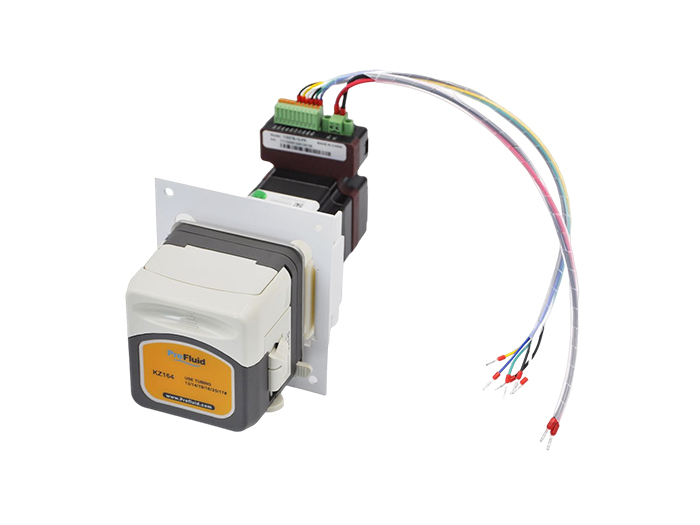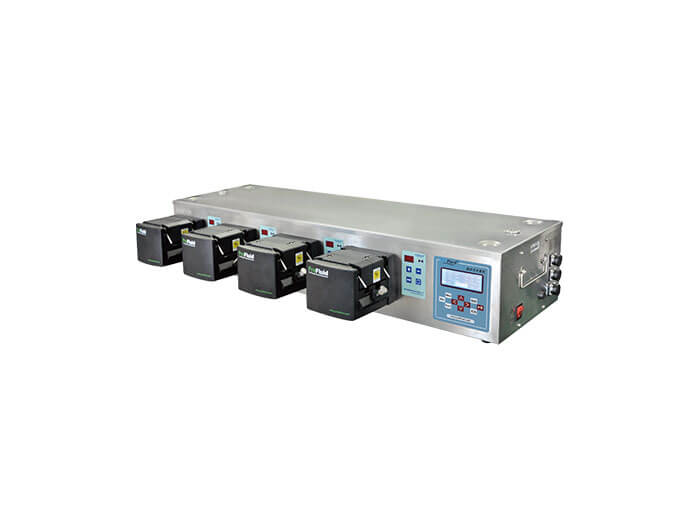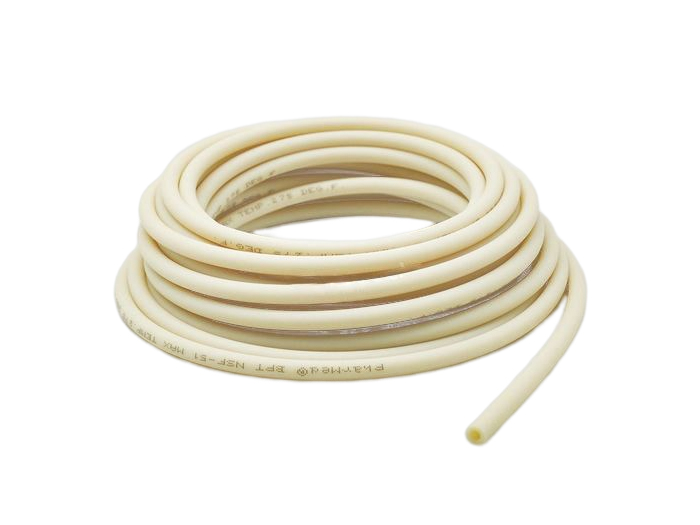Over the years, pury fluid has been based on market demand, to help solve the bio-pharmaceutical, food processing, packaging and printing, environmental engineering, chemical synthesis, photoelectric customer challenges of industries and fields.
Over the years, Prefluid has been based on market needs to help solve the challenges faced by customers in the biopharmaceutical, food processing, packaging and printing, environmental engineering, chemical synthesis, optoelectronics and other industries and fields. However, on a daily basis, what kind of peristaltic pump hose are customers struggling to use to build and transfer a variety of different fluids? What material, diameter and wall thickness of hose should be used for transmission? What's the difference between them? How to choose the speed range and flow range...
So, today we will first analyze what factors should be considered when choosing a hose.
First, hose characteristics
1. The pump tube has certain elasticity, that is, the hose can quickly recover its shape after radial compression (Shore hardness :40~80).
2. It has certain wear resistance
3. The ability to work under pressure
4. Low absorption (good air tightness)
5. Good temperature resistance, not easy to aging
6. Corrosion resistance and no swelling
7. Precipitates are low
Two, chemical compatibility
Hose in the transmission of different fluids, should show a certain optimal chemical performance, called chemical compatibility. Such as: low adsorption, good temperature resistance, not easy to aging, no expansion, corrosion resistance, low sediment. Ordinary pipes have only general contact with chemical substances, and peristaltic pump pipes are in contact with chemical fluids under working conditions. Therefore, the level of chemical compatibility of ordinary pipes cannot be equal to that of peristaltic pump pipes. For a variety of transmission solutions, peristaltic pumps have the appropriate hose to meet the demand. The user should check each chemical in the solution to ensure that it is compatible with the selected pump line.
Chemical compatibility test: Take a section of sample tube, record its weight, diameter, length and other parameters, soak for at least 48 hours, take out the sample tube, in medium, soak for at least 48 hours, take out the sample tube, clean and dry with water, re-measure the weight, diameter and length, observe the changes; Also check whether the hose is soft or brittle. If there is a change, the hose is affected by liquid chemistry, that is, the hose is incompatible with the liquid. Each candidate pump tube sample should be put into the actual plant environment for test run, and closely observe the test results. If the pump line does not show discoloration, swelling, cracking, loss of fluidity, or other signs of deterioration after the test run, it is proven to be compatible with the fluid.
3. Pressure
Back pressure is created when a pump pushes fluid through a filter, or pushes fluid through a flowmeter or valve, or pumps fluid into a pressure reaction vessel. The application of peristaltic pump is limited by the pressure performance of the hose. If the system pressure exceeds the hose pressure, the hose will expand, resulting in excessive hose wear or hose rupture. The factors affecting the hose pressure are: material, diameter and wall thickness ratio, etc.
Four, temperature
The adaptability of the hose to the operating temperature range is a consideration for the user. Different materials have different temperature properties. Some pipes, such as silicone rubber, have a wide temperature bearing range and are suitable for high and low temperature processes; Some pipes are only suitable for a smaller temperature range. Therefore, before selecting a pipe, the user should first find out the maximum and minimum temperature in the system, and then ensure that the selected pump pipe works safely within this temperature range.
5. Size
The size of the hose directly affects the flow rate. The inner diameter of the hose determines the flow rate, and the inner diameter is proportional to the flow rate. The wall thickness affects the compression and rebound ability of the hose, and also has great influence on the service life of the hose.
6. Transparency
Whether to use a clear pipe depends on whether the operator needs to observe the fluid in the pipe at all times and whether the fluid is sensitive to light. If the operator needs to observe fluids, bubbles, particles, contamination, etc. in the pipe at any time, then Tygon transparent pipe such as polyethylene or silicone rubber should be selected and opaque pipe should be selected if the solution should not be exposed.
Seven, breathability
For some gas sensitive fluids, such as easily oxidized fluids or anaerobic cell cultures, the user should consider the permeability of the pipe. Generally speaking, the silica gel tube has higher permeability. Therefore, for fluids not suitable for contact with gas, the pipe with low permeability should be selected
Viii. Certification
Hose used for relevant purposes can pass relevant certification. For example, United States Pharmacopoeia standard USP, European Pharmacopoeia standard EP, United States Food and Drug Administration Standard FDA, United States Department of Agriculture standard USDA National Health Foundation standard NSF.
Nine, hose service life
Different hose resistance roller repeated extrusion, friction ability is different. Different pipe types, pipes, pump heads, and running speeds have different lifetimes. Choose long-life, thick-walled tubes and high-flow pumps that run at lower speeds for longer hose life.
Ten, peristaltic pump hose flow range
Each peristaltic pump hose corresponds to a fixed speed range, we choose the corresponding hose according to the flow range required by the customer.


